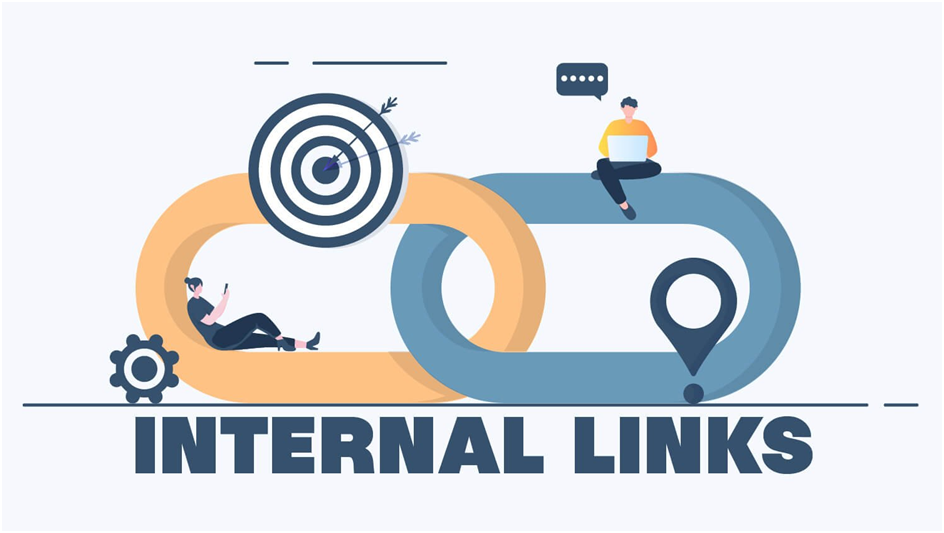How to Use Internal Linking to Boost SEO

Internal linking is one of the most overlooked yet powerful tools in SEO. It plays a pivotal role in enhancing your website’s search engine performance while also improving the user experience. By strategically connecting various pages within your website, you can guide visitors seamlessly through your content, ensuring they find value at every step. This guide will delve into why internal linking matters, how it impacts SEO, and actionable strategies to help you implement it effectively.
What Are Internal Links?
Internal links are hyperlinks that point to another page on the same website. They are different from external links, which lead to pages on other domains. Internal links serve multiple purposes, such as enhancing navigation, directing users to valuable content, and improving search engine crawlers’ understanding of your site’s structure.
Examples of internal links include:
- Navigation links:
Found in menus, sidebars, or footers to help users navigate key sections. - Contextual links:
Embedded within the body of a page or blog to provide additional insights or resources. - Call-to-action (CTA) links:
Encourage users to take specific actions like signing up for newsletters or purchasing a product.
The Importance of Internal Linking for SEO
Internal linking is not just a method to connect pages—it’s a strategy to enhance your website’s functionality and visibility. Here’s why it matters:
1. Improves Crawlability and Indexing
Search engines like Google rely on internal links to crawl and index your website. A well-structured internal linking system ensures that every important page is discoverable by search engine bots, helping them understand your site’s content and hierarchy.
2. Distributes Link Equity
Internal links pass “link juice” or ranking power from one page to another. For example, if your homepage has a high authority, linking it to other pages can distribute this ranking power, improving the overall visibility of your site.
3. Enhances User Experience
By offering users relevant links to explore more about a topic, internal linking keeps them engaged on your site. This reduces bounce rates, increases session durations, and builds trust as visitors find valuable content.
4. Supports Content Discoverability
Internal linking allows you to highlight less-visited pages, ensuring they receive traffic. For instance, linking to older blog posts from newer content can revive and reintroduce useful resources.
5. Boosts Conversions
Strategic internal links can direct users to conversion-focused pages, such as product pages, sign-up forms, or service offerings, helping you achieve business goals.
Best Practices for Internal Linking
To unlock the full potential of internal linking, follow these best practices:
1. Link Strategically
Focus on linking pages that provide value and are contextually relevant. For example, if you’re writing about “SEO Tips,” link to pages on “Keyword Research” or “On-Page Optimization” instead of unrelated topics.
2. Use Descriptive Anchor Text
Anchor text is the clickable text in a hyperlink. It should be descriptive, relevant, and contain keywords where appropriate. For instance, “Learn how to optimize meta tags” is better than generic phrases like “click here.”
3. Prioritize Deep Links
Instead of repeatedly linking to top-level pages like the homepage, link to specific, deeper pages that provide detailed information. Deep linking ensures that all pages on your site receive visibility and SEO benefits.
4. Maintain a Logical Structure
Organize your internal links to reflect your site’s hierarchy. A good structure may look like this:
- Homepage → Category Pages → Subcategory Pages → Individual Posts
5. Audit Links Regularly
Over time, your website grows, and links can break or become outdated. Conduct regular link audits to fix broken links and update older ones to keep your site healthy and functional.
6. Avoid Overlinking
While internal links are beneficial, overloading a page with too many links can overwhelm users and dilute the link equity distributed to each page. Use internal links thoughtfully and sparingly.
Advanced Internal Linking Strategies
1. Leverage Cornerstone Content
Cornerstone content is a comprehensive resource on a specific topic, acting as a central hub for related pages. For example, if you have a site about digital marketing, a cornerstone article on “Complete Guide to Digital Marketing” can link to individual posts on topics like “SEO,” “Social Media Marketing,” and “Content Strategy.”
2. Revive Old Content
Older content often gets buried in archives. By linking to these pages from newer content, you can drive fresh traffic and signal to search engines that the old content is still relevant.
3. Incorporate Breadcrumb Navigation
Breadcrumbs are navigation aids that display the user’s path through your site. They improve user experience and provide additional internal links for search engines to crawl. For instance:
Home > Blog > SEO Tips > Internal Linking Guide
4. Optimize for Conversions
Identify high-performing pages with strong traffic and link them to pages with conversion opportunities, like product or service pages. This strategy funnels engaged users toward actions that matter to your business.
5. Use Visual Links
Clickable images, infographics, and buttons can act as internal links. Visual elements are particularly appealing for mobile users and can guide them to valuable resources.
Tools for Internal Linking
Several tools can streamline your internal linking process:
- Google Search Console: Identify pages with high impressions and opportunities for linking.
- Yoast SEO: Recommends internal links as you create content (ideal for WordPress users).
- Ahrefs: Analyze your internal link structure and identify areas for improvement.
- Screaming Frog: Detect orphan pages and broken links.
Common Internal Linking Mistakes
1. Creating Orphan Pages
Orphan pages are pages without any internal links pointing to them, making them invisible to users and search engines. Ensure every page is linked at least once.
2. Using Generic Anchor Text
Avoid vague phrases like “click here” or “read more.” Instead, use anchor text that clearly describes the linked page’s content.
3. Relying Solely on Navigation Menus
While navigation menus are crucial, relying only on them limits the depth of your internal linking strategy. Contextual links within content provide more value.
4. Keyword Stuffing
Overloading anchor text with keywords can appear spammy and harm your SEO efforts. Ensure anchor text is natural and reader-friendly.
5. Broken Links
Broken links frustrate users and negatively impact SEO. Regularly monitor and repair any broken links on your site.
Measuring the Success of Internal Linking
Tracking the impact of your internal linking efforts helps refine your strategy. Key metrics to monitor include:
- Organic Traffic: Increased visibility of linked pages should result in higher traffic.
- Bounce Rate: Effective internal linking reduces bounce rates by keeping users engaged.
- Session Duration: Users exploring more pages typically spend more time on your site.
- Indexed Pages: Ensure all important pages are indexed by search engines.
Conclusion
Internal linking is a powerful yet often underutilized SEO tactic. By connecting your website’s content thoughtfully, you improve search engine visibility, enhance user experience, and create a cohesive content network. Whether you’re guiding users to cornerstone articles, reviving old content, or directing traffic to conversion-focused pages, internal linking can transform your website’s performance.
Start implementing these strategies today to build a robust internal linking framework that benefits both users and search engines, positioning your website for long-term success.





